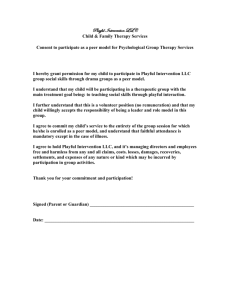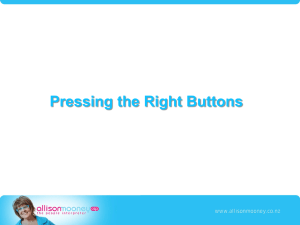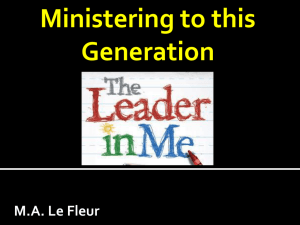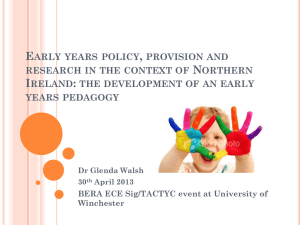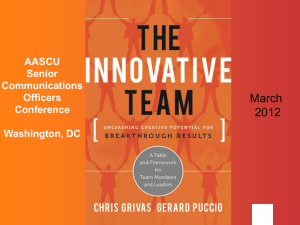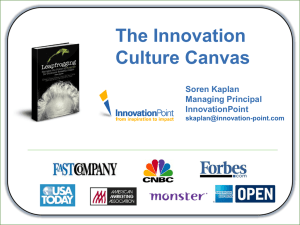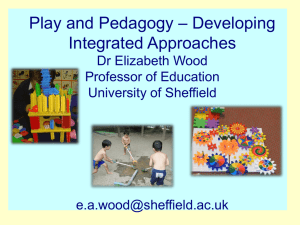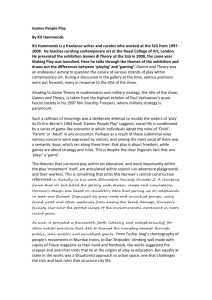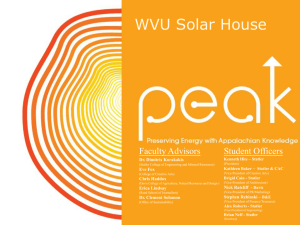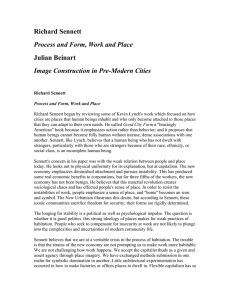abstract for sport, play and game
advertisement
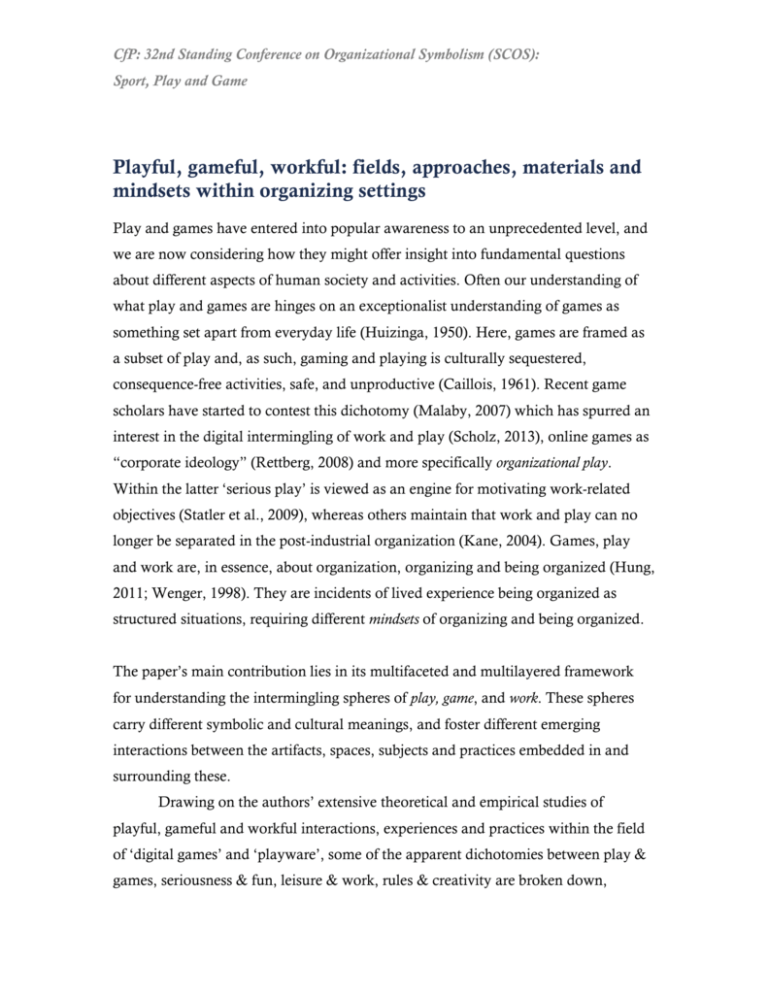
CfP: 32nd Standing Conference on Organizational Symbolism (SCOS): Sport, Play and Game Playful, gameful, workful: fields, approaches, materials and mindsets within organizing settings Play and games have entered into popular awareness to an unprecedented level, and we are now considering how they might offer insight into fundamental questions about different aspects of human society and activities. Often our understanding of what play and games are hinges on an exceptionalist understanding of games as something set apart from everyday life (Huizinga, 1950). Here, games are framed as a subset of play and, as such, gaming and playing is culturally sequestered, consequence-free activities, safe, and unproductive (Caillois, 1961). Recent game scholars have started to contest this dichotomy (Malaby, 2007) which has spurred an interest in the digital intermingling of work and play (Scholz, 2013), online games as “corporate ideology” (Rettberg, 2008) and more specifically organizational play. Within the latter ‘serious play’ is viewed as an engine for motivating work-related objectives (Statler et al., 2009), whereas others maintain that work and play can no longer be separated in the post-industrial organization (Kane, 2004). Games, play and work are, in essence, about organization, organizing and being organized (Hung, 2011; Wenger, 1998). They are incidents of lived experience being organized as structured situations, requiring different mindsets of organizing and being organized. The paper’s main contribution lies in its multifaceted and multilayered framework for understanding the intermingling spheres of play, game, and work. These spheres carry different symbolic and cultural meanings, and foster different emerging interactions between the artifacts, spaces, subjects and practices embedded in and surrounding these. Drawing on the authors’ extensive theoretical and empirical studies of playful, gameful and workful interactions, experiences and practices within the field of ‘digital games’ and ‘playware’, some of the apparent dichotomies between play & games, seriousness & fun, leisure & work, rules & creativity are broken down, CfP: 32nd Standing Conference on Organizational Symbolism (SCOS): Sport, Play and Game nuanced and clarified. Hence, the authors argue that free play can indeed be rulebound, serious, and hard work, work-things can easily be appropriated as play-things or game-things (and vice versa), while gaming practices can be concurrently playful and workful. In the paper we conceptualize this through a multifarious network of interactions between: artifacts; play-things (Lego bricks), game-things (Minecraft or LEGO Mindstorm) and work-things (smartphones or worktables), spaces; play-spaces (e.g. the living room), game-spaces (e.g. Minecraft worlds) and work-spaces (e.g. the office), subjects; players, gamers and workers, and practices; playing, gaming and working Here, establishing interrelations between different theoretical frameworks for work, play and games can contribute to explicate distinctions and correlations between gameful, playful and workful activities and experiences (Sennett, 2008; Nørgård, 2012; Sutton-Smith 2001), attitudes (Suits, 2005; Karoff, 2013), framings (Goffman 1974; Wittgenstein) as well as social approaches (Toft-Nielsen, 2012) subjects take towards certain artifacts, practices and settings (Tuan, 2005; Lefebvre, 1991; Creswell). Overall, the paper empirically investigates and theoretically develops a conceptual network for the above-mentioned spheres within different organizational contexts such as the work office, the gameworld, the living room and the playground. In this way, the paper contributes to the understanding of playful, gameful and workful fields, approaches, mindsets and materials within organizing settings. (Abstract: 494 words) CfP: 32nd Standing Conference on Organizational Symbolism (SCOS): Sport, Play and Game References Caillois, R. (1961). Man, play, and games. New York: The Free Press of Glencoe. Huizinga, J. H. (1950). Homo ludens : a study of the play-element in culture. Boston: Beacon Press. Cresswell, T. (2004). Place - a short introduction. Oxford: Blackwell Publishing Gofman, E. (1974). Frame Analysis - An essay on the organization of experience. Boston: Northeastern University Press Hung, A. C. Y. (2011). The work of play : meaning-making in videogames. New York: Peter Lang. Kane, P. (2004). The play ethic : a manifesto for a different way of living. London: Macmillan. Karoff, H.S. (2013). "Play Moods and Play Practices." International Journal of Play Vol. 2 (3) Lefebvre, H. (1991). The production of space. Oxford: Basil Blackwell. Malaby, T. M. (2007). Beyond Play. Games and Culture, 2, 95-113. Nørgård, R.T. (2012). Gameplay Corporeality - the corporeal-locomotive dimension in gameplay activity and experience. PhD Thesis, Aarhis University, Institute for Aestetics and Communication, Information and Media Studies. Rettberg, S. (2008). Corporate Ideology in World of Warcraft. In: Corneliussen, H. & Rettberg, J. W. (eds.) Digital culture, play, and identity : a World of Warcraft reader. Cambridge, MA: MIT Press. Scholz, T. (2013). Digital labor : the Internet as playground and factory. New York: Routledge. Sennett, R. (2008). The Craftsman. London: Penguin Books. Statler, M., Roos, J. & Victor, B. (2009). Ain't Misbehavin': Taking Play Seriously in Organizations. Journal of Change Management, 9, pp. 87-107. Sutton.Smith, B. (2001). The Ambiguity of Play. Cambridge: Harvard University Press. Suits, B. (2005). The grasshopper: games, life and utopia. Peterborough, Ont.: Broadview Press. Toft-Nielsen, C. (2012). Gamingpraksis : en vidvinkeloptik på computerspil, køn, genre og hverdagsliv. PhD Thesis, Aarhis University, Institute for Aestetics and Communication, Information and Media Studies. Tuan, Y.-F. (2005). Space and place : the perspective of experience. Minneapolis: University of Minnesota Press. Wenger, L. (1998). Communities of Practice - Learning, meaning and identity. Cambridge: The University of Cambridge. Wittgenstein, L. (1953). Philosophical Investigations. Oxford: Basil Blackwell
